Please Note: This post is about a salmonella outbreak that occurred in several parts of the United States in winter and spring 2021. While that outbreak has passed, cleaning and disinfecting your feeders is always a good practice.
I’ve lived next to the same retired couple for 20 years. They’re kind with words and consistent with seed. Their place is breakfast for the birds. My place is the bathroom. I saw my first Steller’s jay on our shared wood-slat fence last spring. Exciting. But I’ve cleaned up bird poop for 20 years. Not exciting. I’m regularly hosing down my backyard because my neighbors keep a full bird feeder in their front yard.
Well, they did until this year. I walked the block last night. Their bird feeder is empty and cleaner than I’ve ever seen it. As it should be.
Eastern Idaho, where I live, is in the middle of a salmonella outbreak. It’s not a localized occurrence. Birds across the West are sick and spreading the illness as they congregate then migrate. Cases are coming in from Washington to Utah and to the east, North Carolina is having trouble too.
While bird feeding is experiencing a pandemic boom in popularity, feeding birds at this moment is having dire consequences. Birds are dying in no small part due to bird feeding.
You can still enjoy birds. But it’s time to remove seed and take down the feeders.
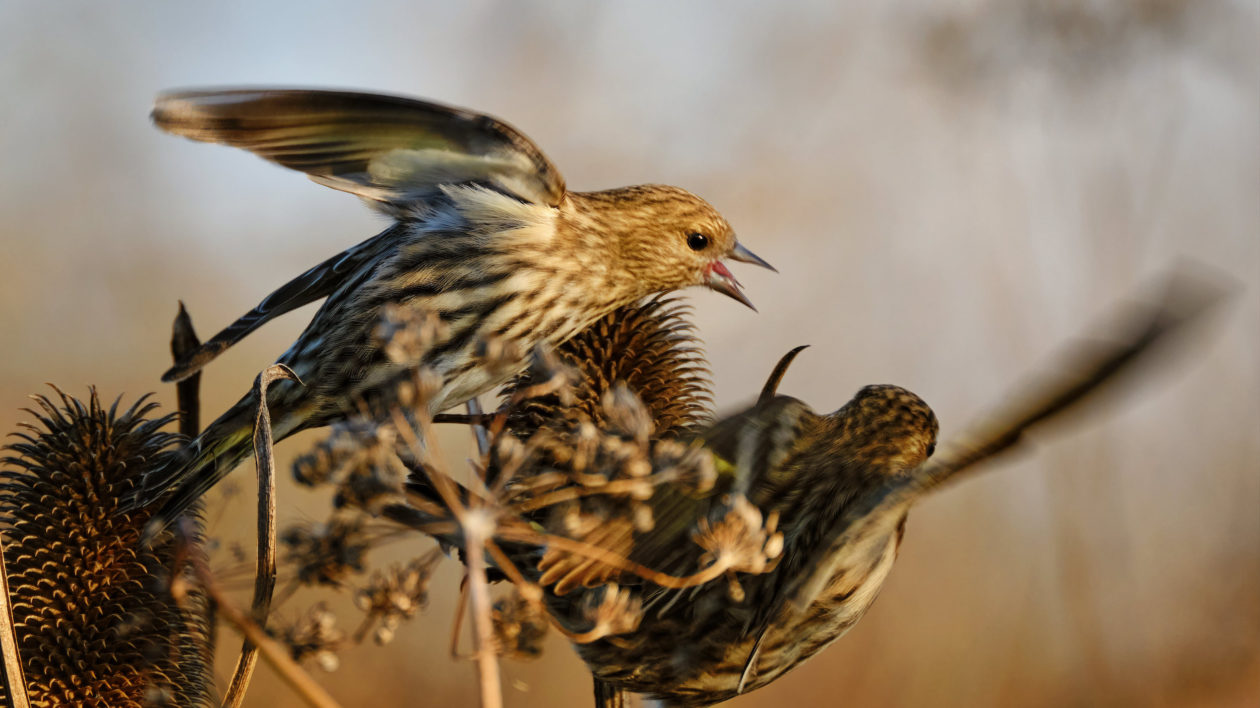
Outbreak
Songbirds are prone to salmonellosis, commonly called salmonella. Pine siskins are songbirds and they experienced an irruption over the winter. That’s a population explosion so there’s a lot of them flitting about this winter. Many of them are sick.
“This is the biggest outbreak I’ve heard of and I’ve been following birds for 25 years,” says Nicole Michel, National Audubon Society director of quantitative science. “It all ties into pine seed crops in the boreal regions where they usually are. There weren’t enough seeds so they came south. They’re weak because they’ve traveled farther than they’re used to and they’re congregating wherever they can eat.”
Salmonella starts when bird food gets wet. That’s how the bacteria grows on seed then it spreads through feces dropped in the same place. Salmonella is a fatal bacterial infection for birds and it’s hitting siskins hard because they congregate around feeders, but the outbreak isn’t species-specific. Anything eating seed in your yard, resident or migrator, can spread or contract salmonella. The three Ds of symptoms include ‘depressed, drowsy and diarrhea.’ Depression won’t be obvious in wildlife, but drowsy will. Infected birds close their eyes often and they puff up, like they do in cold weather, but they’re not cold. They’re sick.
California started seeing more cases in December. Other states are seeing an uptick this spring as the bacteria continues to spread, which is why more state agencies are asking people to remove their bird feeders.
“When large numbers of pine siskins congregate, the disease can spread rapidly causing high mortality,” says Krysta Rogers, California Department of Fish and Wildlife senior environment scientist and avian disease specialist. “Most birds die within 24 hours of infection.”
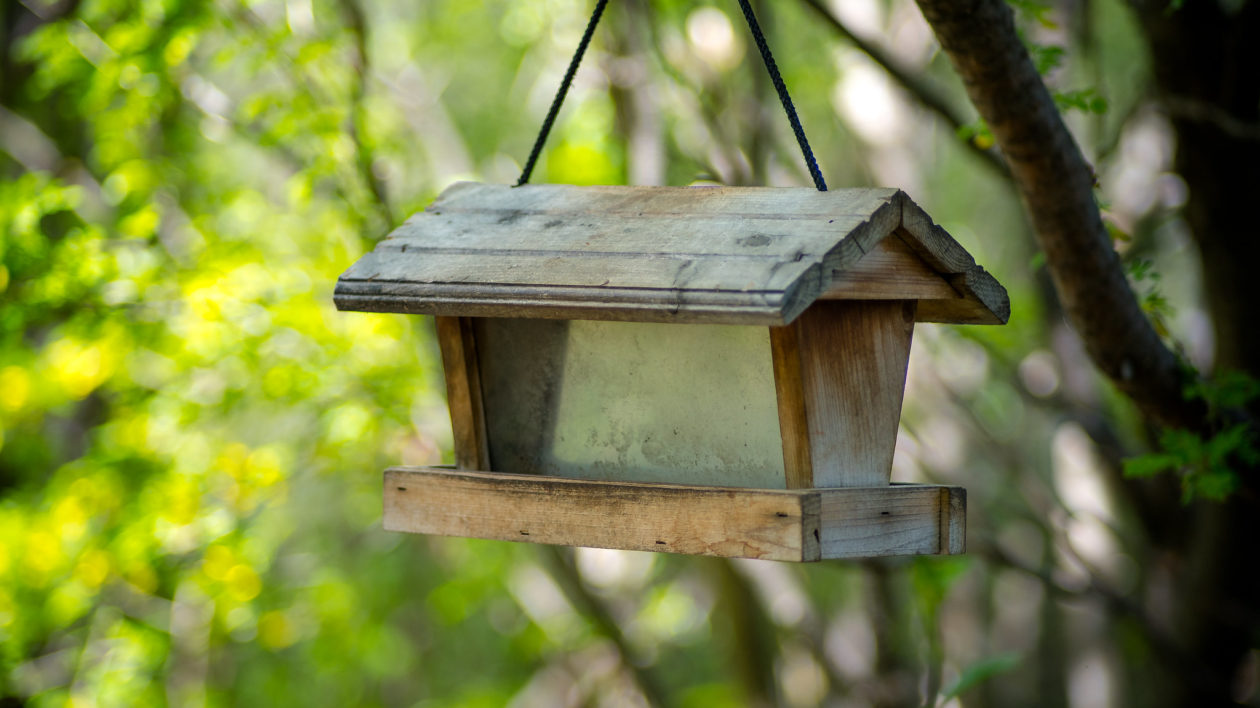
Clean Your Feeders
What those birds leave behind, feces and germs, lingers and it comes in contact with anything else enticed to perch nearby. That’s why you have to clean.
Clean feeders once a week with warm soapy water in normal years. Clean them several times a week during salmonella years like the one we’re in now. Better yet, clean it with one part bleach to 10 parts water.
Soak the whole thing in that solution for about 10 minutes then air dry the container while you remove spent grain and other waste from the area around and under the feeder hanger. Put on gloves before you clean and wash your hands after handling equipment or collecting dead birds.
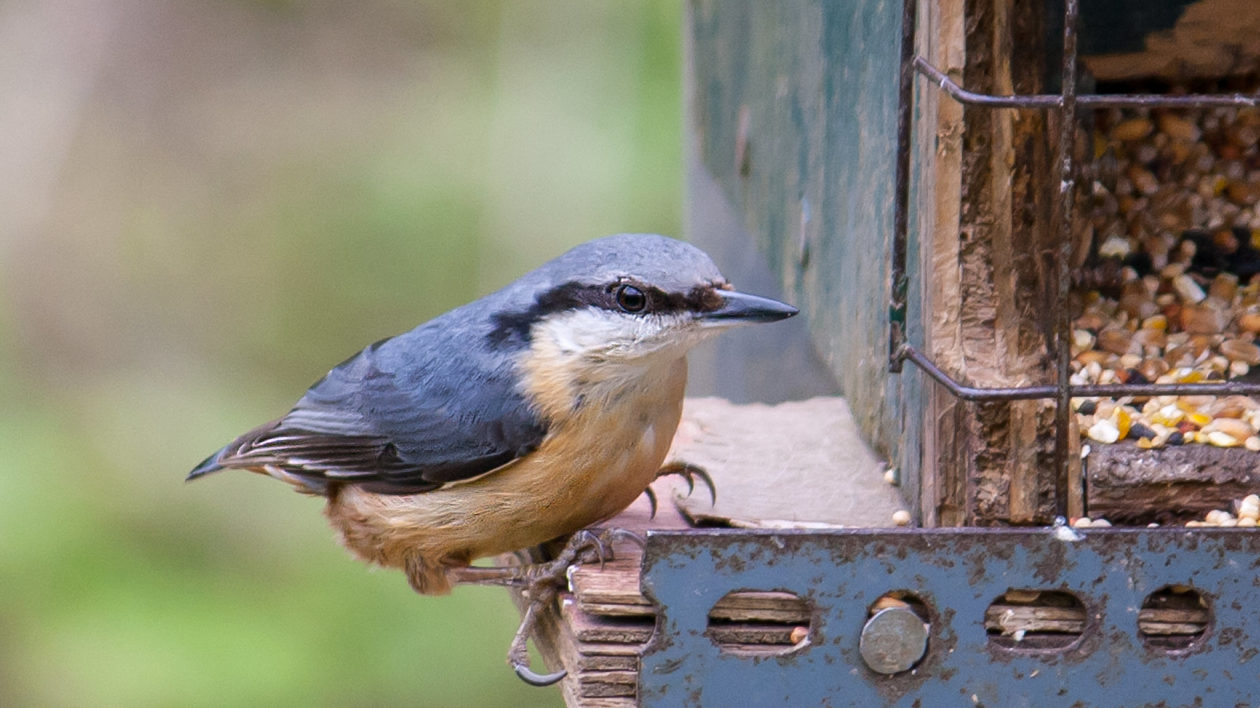
Encourage Avian Social Distancing
Especially this year, don’t stop at cleaning. Put your feeder away for a month. Michel, based in Portland, Oregon pulled her feeder for two months. If you must rehang your cleaned feeder, hang it empty.
“There’s a lot of other food sources they can still find,” Michel says. “The risk of death by starvation is lower than the risk of death by salmonella if you keep a contaminated feeder up.”
It’s the concentration of birds in one place that spreads the problem, but they won’t hang around if there are no hand-outs. The birds need to social distance to save themselves. And not to worry, they won’t starve without your supply.
“Although stopping feeding may seem like it will harm birds, in reality, they use feeders as just one source of food and will quickly disperse to find other food sources and in so doing, reduce transmission of this disease at feeding sites,” says Tempe Regan, Idaho Department of Fish and Game regional diversity biologist. “Sanitation is critical and it is your responsibility to ensure your feeders are not facilitating disease transmission.”
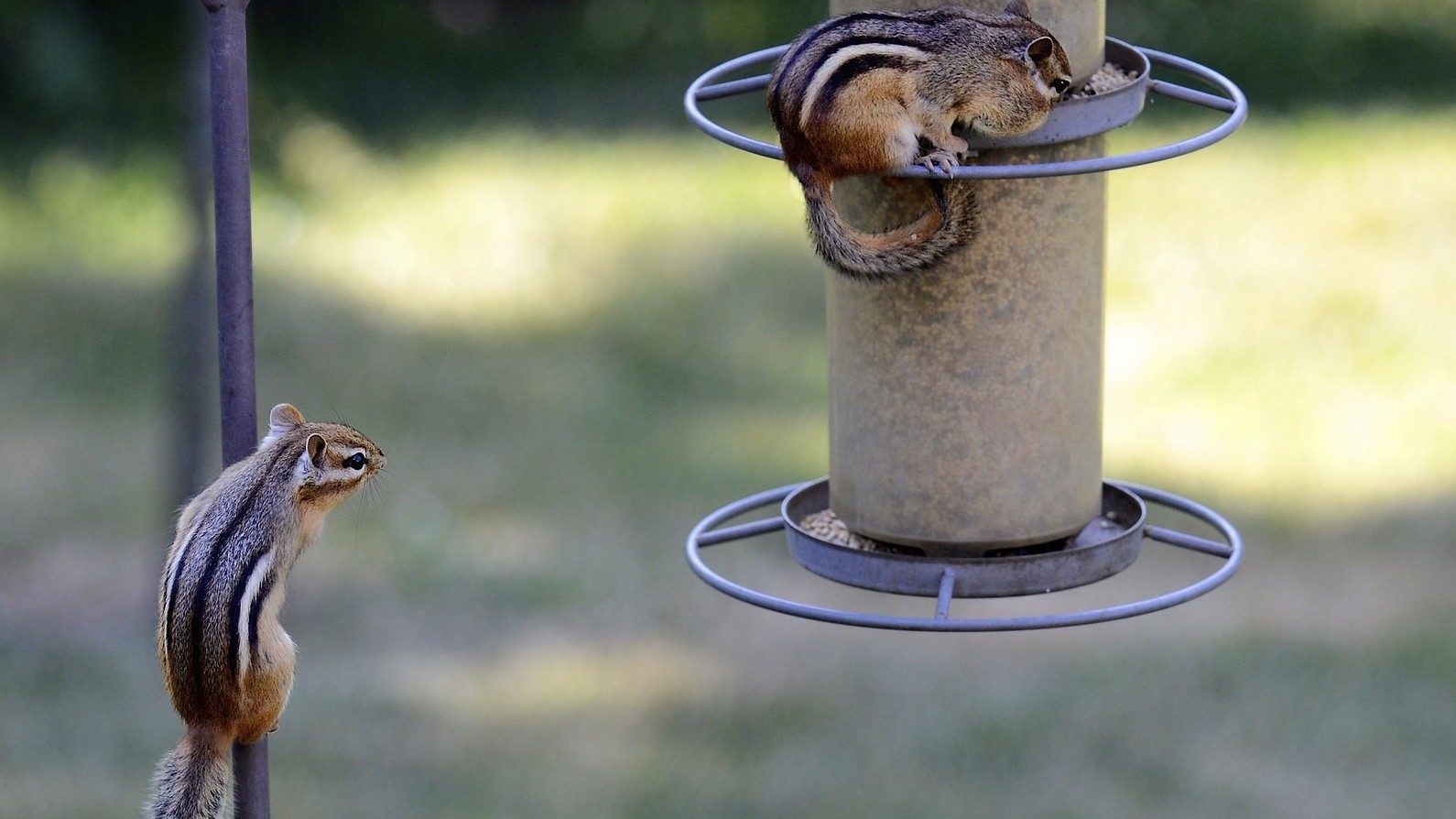
Dogs & Cats
Disease transmission to humans is possible. In mammals, the symptoms are more like food poisoning, but pets are a bigger concern especially. The drowsy symptom mentioned above may cause a bird to stay on the ground when approached. Obviously, the same is true if it dies. That’s an easy meal for a predator allowing the disease to spread to and/or through your furry family member. Keep dogs and cats out of hunt mode in your neighborhood this spring. (And better yet, don’t allow your pets to roam freely and hunt wildlife, ever).
Refraining from feeding birds can be a bummer, especially those new to the birding hobby. But you can still watch what’s moving through without feeding it. The birds are still around. If you have a yard, you may want to consider incorporating natural landscaping that provides habitat without concentrating birds.
Backyard birding has become so popular that is has fueled a seed shortage. But now is not the time to search for seed. Keep the binoculars and field guides handy. For the time being, though, forego the feeding to help the birds you love.
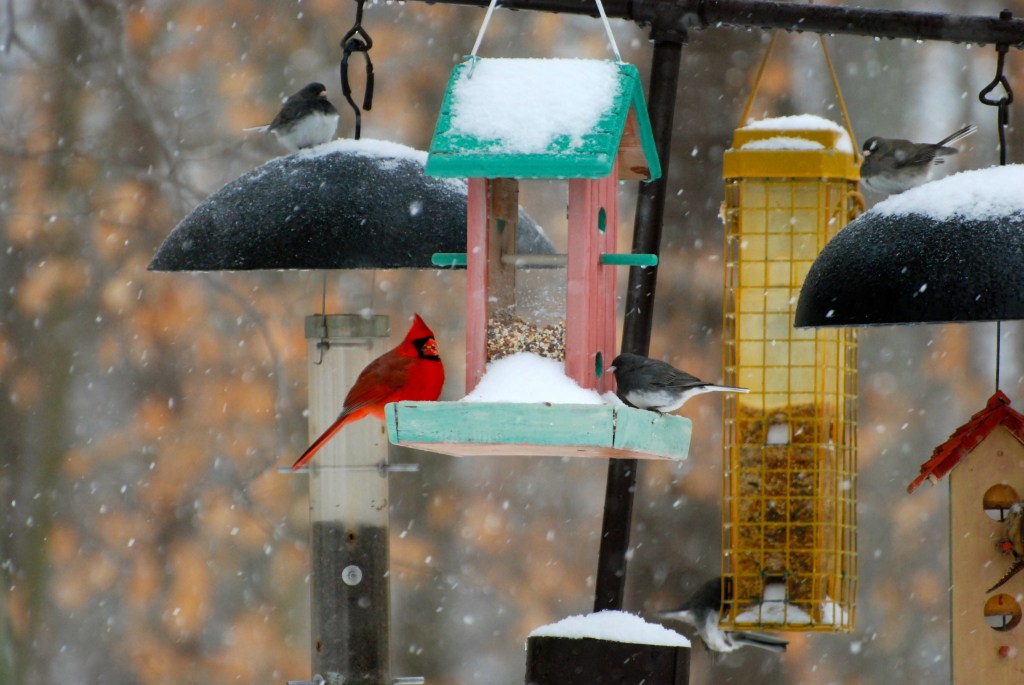



Does this apply to suet cages also?
I’m in Florida, I’ve had 3 couples of cardinals, mocking birds out the Ying yang,I even have 3 russetshoulderd osprey, oh and the dear little doves, tufted tip mouse, as you can see I love my song bird. Making the sick is horrifying. I do clean my feeder at least twice a month. I put it in my dish washer after I rinse out. Now I concerned about suet. Please tell me what I need to do!! How long does it last thru the rainy season and in the hot humid summers?
I’m wondering if this issue isn’t directly connected to the seed itself. I’ve tried experimenting with a couple different brands of shelled sunflower seeds, and when I added water to the seeds in a clean sanitized dish and let it dry, there was the blue-green residue left behind. Seeds get wet in the feeders, so everyone concludes it’s due to the feeders, but this appears to be originating in the seeds themselves. Perhaps it’s due to a fertilizer that has been sprayed on the plant thus absorbed into the seed, or a pesticide that the seed has been coated with after harvesting for pest prevention, or just the storage itself. Where does the seed come from? Is it imported from other countries that are using chemicals that affect the seeds resulting in Salmonella at the source? I’ve noticed the Pine Siskins are particularly affected, but also a few Finches as well. You can keep your feeders as clean and dry as possible, but if the Salmonella is actually caused from the seed, or from a chemical additive causing the poisoning, then it’s an even bigger problem. There have been flour recalls in the past, so it wouldn’t be that big of a stretch. I have not heard of any seed recalls, but I think it needs to be considered… and SOON!
Totally disagree with the idea of telling people to not put out feeders. That will concentrate birds more not less. Think about a city that closes down the majority of restaurants and grocery stores. People don’t just stop eating… they eat the same amount but now they are forced to be more consolidated and birds (like many people during this pandemic) are not rational beings and don’t just stay away from each other and take turns in line. Instead they push and fight over fewer food sources forcing them to be in even closer contact than if you left the original feeders in place. Sure, clean the feeders more often, that’s good advice all the time none of us like eating off dirty plates. But reducing the food locations will have no major positive impact and will possibly increase spread of any
disease.
Matt,
Thank you for your comment. Please see the editor’s note at the beginning of this article. This was in regards to a salmonella outbreak this winter, although the advice on feeder cleaning is always good practice. Salmonella is spread primarily through bird feeders. During outbreaks, it makes sense to take them down, for reasons stated in the article.
Matt Miller
Editor, Cool Green Science
Tony,
Thanks for your question. Darwin collected fallow deer there. The skins of those deer are still held by the London Natural History Museum. Here is a scientific article that mentions this collection: https://www.tandfonline.com/doi/full/10.1080/14614103.2017.1349027
Matt
I live in central Oregon and about two months, ago , July 2021 I noticed a very sick Pine Siskin sitting at my feeder. Probably only a day or two to live. I took down my two feeders. I put them back up the first of September and again noticed a bird I am not familiar with showing the same symptoms. Down the feeders came again. I have ordered a couple tube feeders that will be easier to clean and not so easy to flock around but I am waiting at least a month to try again. I hope this does the trick as the only other option is to not feed. For the health of the birds I will do whats best. Thanks for the article and enjoyed all the comments. Sincerely Judith Higgins.
I guess if you have salmonella in your seeds, the birds can get it…..can’t figure how you’d ever have salmonella in seeds….maybe raw chicken…but seeds????
Hi Paul,
Thanks for your question/comment. It is because birds are eating from the same food source. The seeds themselves do not carry the salmonella. It is the birds passing it to each other. They are contaminating the seed.
Matt Miller
Editor, Cool Green Science
Why is a March 2021 article appearing on Google news in late August 2021? A tad outdated.
I have informed friends about this situation and to take down the feeders. One friend found 3 dead small birds near her feeder. I remember somewhere in this discussion a suggestion to notify someone or audubon about this. Please tell me who to notify so that we can help out here.